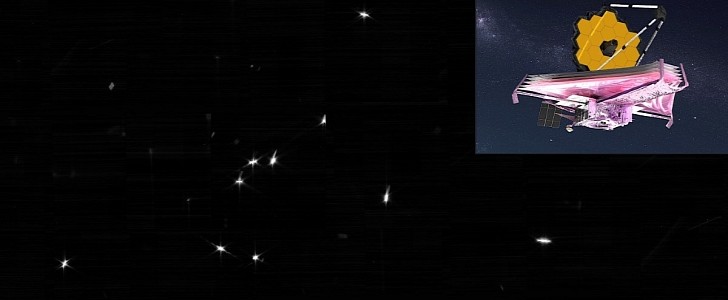Time and money are two constructs we, as humans, are constantly running out of. But 30 years and several billion dollars later, the first calibration images for the James Webb Space Telescope are worth every single second and penny.
The first admittedly blurry and not very well-defined image of celestial objects in the vastness of space was snapped this past week. It was a week-long-plus project to determine what sort of shape the telescope's NIRC camera was in after the month-long journey to L2 orbit. Some of you who remember the deployment of the Hubble Space Telescope and its disastrously blurry first images.
It was a problem that required a series of Space Shuttle missions to fix properly. Such a space mission is not possible farther away from the Earth than the Moon by a substantial degree. Absolutely everything about the JWST's cameras, mirrors, electronics, and other sub-systems is going to have to be pretty darn perfect if it's expected to survive and collect scientific data for any prolonged period of time.
Several test images were merged together after the fact to create a mosaic by pointing the telescope at a vert luminous singular star in the constellation Ursa Major, known as HD 84406. The star was chosen because, as far as we can see, it's not surrounded by clusters of other, less bright stars, a perfect target for calibration.
Fifty-four gigabytes, 1,500-plus images, and several sleepless nights for NASA/ESA scientists resulted in the very first flickers of hope for a project that looked to be dead in the water several times over the last 30 years. What happens when JWST takes its first snapshots of things billions of lightyears away? It's anyone's guess as to what it'll find. Whatever the case may be, you can read about it right here on autoevolution as soon as it happens.
It was a problem that required a series of Space Shuttle missions to fix properly. Such a space mission is not possible farther away from the Earth than the Moon by a substantial degree. Absolutely everything about the JWST's cameras, mirrors, electronics, and other sub-systems is going to have to be pretty darn perfect if it's expected to survive and collect scientific data for any prolonged period of time.
Several test images were merged together after the fact to create a mosaic by pointing the telescope at a vert luminous singular star in the constellation Ursa Major, known as HD 84406. The star was chosen because, as far as we can see, it's not surrounded by clusters of other, less bright stars, a perfect target for calibration.
Fifty-four gigabytes, 1,500-plus images, and several sleepless nights for NASA/ESA scientists resulted in the very first flickers of hope for a project that looked to be dead in the water several times over the last 30 years. What happens when JWST takes its first snapshots of things billions of lightyears away? It's anyone's guess as to what it'll find. Whatever the case may be, you can read about it right here on autoevolution as soon as it happens.






